
Punta Carretas: Where History Meets Modernity by the Sea
Discover Punta Carretas in Montevideo: A blend of historic charm, modern attractions, stunning coastal views, and vibrant culture. A must-visit for any traveler to Uruguay.
Punta Carretas is a charming and vibrant neighbourhood in Montevideo, Uruguay. Known for its rich history and contemporary flair, this area seamlessly blends old-world charm with modern amenities. As you walk through its streets, you'll encounter beautifully preserved colonial architecture standing next to sleek, modern buildings, offering an eclectic mix that's sure to captivate any visitor. One of the highlights of Punta Carretas is its stunning coastline. The Rambla, a picturesque promenade, runs along the neighbourhood, providing breathtaking views of the Atlantic Ocean. It's a perfect place for a leisurely walk, a bike ride, or simply to sit and watch the sunset. The nearby Punta Carretas Lighthouse is another must-see; it offers panoramic views that are truly Instagram-worthy. Punta Carretas is also a shopper's paradise. The Punta Carretas Shopping Mall, housed in a former prison, is one of the most popular shopping destinations in Montevideo. Here, you can find a wide range of shops, from high-end boutiques to local artisan stores, as well as a variety of dining options. For those interested in culture, the area is home to several art galleries and the Museo Zorrilla, which celebrates the life and work of the famous Uruguayan poet Juan Zorrilla de San Martín. Food lovers will find Punta Carretas to be a culinary delight. The neighbourhood boasts numerous restaurants, cafes, and bars that offer everything from traditional Uruguayan dishes to international cuisine. Whether you're in the mood for a hearty steak, fresh seafood, or a delicious dessert, you'll find something to satisfy your palate. With its unique blend of history, culture, and modern attractions, Punta Carretas is a neighbourhood that offers something for everyone. Whether you're a history buff, a shopaholic, or a foodie, you're sure to find plenty to enjoy in this delightful corner of Montevideo.
Local tips in Punta Carretas
- Visit the Punta Carretas Lighthouse for the best panoramic views of the area.
- Take a stroll along the Rambla for a relaxing experience by the sea.
- Explore the Punta Carretas Shopping Mall for a unique shopping experience in a historic setting.
- Don't miss the Museo Zorrilla to delve into Uruguay's literary heritage.
- Try local Uruguayan cuisine at one of the many restaurants in the neighbourhood.
Punta Carretas: Where History Meets Modernity by the Sea
Punta Carretas is a charming and vibrant neighbourhood in Montevideo, Uruguay. Known for its rich history and contemporary flair, this area seamlessly blends old-world charm with modern amenities. As you walk through its streets, you'll encounter beautifully preserved colonial architecture standing next to sleek, modern buildings, offering an eclectic mix that's sure to captivate any visitor. One of the highlights of Punta Carretas is its stunning coastline. The Rambla, a picturesque promenade, runs along the neighbourhood, providing breathtaking views of the Atlantic Ocean. It's a perfect place for a leisurely walk, a bike ride, or simply to sit and watch the sunset. The nearby Punta Carretas Lighthouse is another must-see; it offers panoramic views that are truly Instagram-worthy. Punta Carretas is also a shopper's paradise. The Punta Carretas Shopping Mall, housed in a former prison, is one of the most popular shopping destinations in Montevideo. Here, you can find a wide range of shops, from high-end boutiques to local artisan stores, as well as a variety of dining options. For those interested in culture, the area is home to several art galleries and the Museo Zorrilla, which celebrates the life and work of the famous Uruguayan poet Juan Zorrilla de San Martín. Food lovers will find Punta Carretas to be a culinary delight. The neighbourhood boasts numerous restaurants, cafes, and bars that offer everything from traditional Uruguayan dishes to international cuisine. Whether you're in the mood for a hearty steak, fresh seafood, or a delicious dessert, you'll find something to satisfy your palate. With its unique blend of history, culture, and modern attractions, Punta Carretas is a neighbourhood that offers something for everyone. Whether you're a history buff, a shopaholic, or a foodie, you're sure to find plenty to enjoy in this delightful corner of Montevideo.
Iconic landmarks you can’t miss
Parque Jose Enrique Rodó
Explore the tranquility and cultural vibrance of Parque Jose Enrique Rodó, a must-visit city park in Montevideo, perfect for relaxation and local experiences.

Punta Del Papu
Explore Punta Del Papu, Montevideo's serene park and restaurant, where nature meets culinary delight in a picturesque setting.

Villa Biarritz Park
Discover the beauty and tranquility of Villa Biarritz Park in Montevideo, a perfect retreat for nature lovers and families alike.

Punta Carretas Lighthouse
Experience stunning vistas and rich maritime history at Punta Carretas Lighthouse in Montevideo, a must-see observation deck for all tourists.

Canteras del Parque Rodó
Explore the natural beauty and cultural richness of Canteras del Parque Rodó, a must-visit urban oasis in the heart of Montevideo.

Punta Carretas Promenade
Discover the scenic Punta Carretas Promenade in Montevideo, a vibrant waterfront filled with shops, parks, and stunning ocean views.

Muelle - Faro de Punta Carretas
Experience the charm of Muelle - Faro de Punta Carretas, a captivating coastal attraction in Montevideo with stunning views and rich maritime heritage.

Fishermen‘s Walk
Discover the beauty and culture of Montevideo at Fishermen's Walk, a scenic waterfront promenade rich with local charm and breathtaking views.

Memorial Ex Penal Punta Carretas
Uncover the poignant history of Uruguay at the Memorial Ex Penal Punta Carretas, a historical landmark that embodies resilience and the struggle for justice.

Los Another Square
Discover the historical charm of Los Another Square in Montevideo, where culture, community, and history converge in a vibrant atmosphere.

Unmissable attractions to see
Villa Biarritz Park
Explore Villa Biarritz Park, a lush urban oasis in Montevideo featuring scenic paths, vibrant gardens, and lively artisan markets for an unforgettable experience.

Fountain of the Padlocks
Discover the Fountain of the Padlocks in Montevideo, a romantic landmark where love stories come alive through the tradition of padlocks and promises.

Rambla Park
Discover the enchanting Rambla Park in Montevideo - a coastal paradise for relaxation, outdoor activities, and cultural experiences.
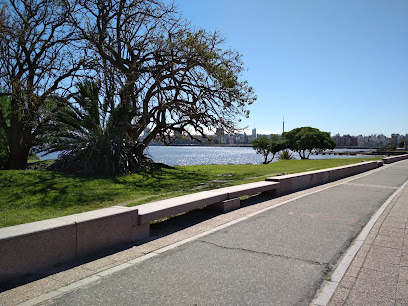
Punta Carretas Promenade
Experience the vibrant culture and stunning views along Montevideo's Punta Carretas Promenade, a perfect blend of relaxation and local charm.

Parque de las Instrucciones del Año XIII
Experience the tranquility and beauty of Parque de las Instrucciones del Año XIII, a premier green space in Montevideo perfect for relaxation and recreation.

Muelle - Faro de Punta Carretas
Explore the stunning Muelle - Faro de Punta Carretas in Montevideo, where breathtaking coastal views meet rich maritime heritage.

Fishermen‘s Walk
Discover the enchanting Fishermen's Walk in Montevideo, a scenic promenade with stunning ocean views, local culture, and delectable cuisine.

Essential places to dine
La Perdiz
Experience authentic Uruguayan cuisine at La Perdiz in Montevideo - where every meal is a celebration of flavor and culture.

Francis
Discover the culinary excellence of Francis in Montevideo - where local flavors meet modern gastronomy.

Parrilla Garcia
Discover the rich flavors of Uruguayan barbecue at Parrilla Garcia in Montevideo, where tradition meets exceptional taste.

El Berretín
Experience authentic Uruguayan cuisine at El Berretín in Montevideo – where tradition meets flavor in a vibrant setting.

El Fogón
Discover authentic Uruguayan grill cuisine at El Fogón in Montevideo – where flavor meets tradition in a vibrant atmosphere.

Dakota
Discover Dakota in Montevideo - where American cuisine meets local flavors in a chic setting perfect for any occasion.

Uruguay Natural Parrilla Gourmet
Experience authentic Uruguayan barbecue at Uruguay Natural Parrilla Gourmet in Montevideo – where every meal is a celebration of flavor.

Casa Magnum
Experience the rich flavors of Asia at Casa Magnum in Montevideo - where culinary excellence meets elegance.
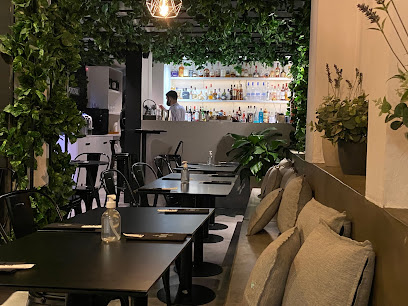
Baco Vino y Bistro
Experience gourmet dining at Baco Vino y Bistro in Montevideo, where exquisite cuisine meets an impressive selection of Uruguayan wines.

Leyenda Restaurante
Experience the rich flavors of Uruguay at Leyenda Restaurante in Montevideo – where every meal is a culinary adventure.
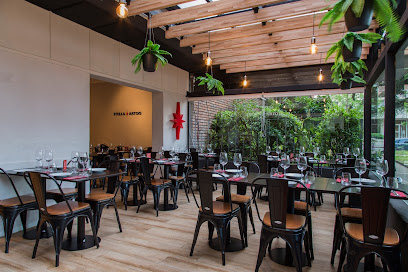
Markets, malls and hidden boutiques
Punta Carretas Shopping
Explore Punta Carretas Shopping, Montevideo's premier shopping destination, featuring diverse shops, delicious dining, and vibrant entertainment options.

Bigbox | Punta Carretas Shopping
Discover unique gifts and local crafts at Bigbox in Punta Carretas Shopping, Montevideo – a must-visit for every tourist.

Petra
Shop at Petra in Montevideo for trendy clothing and accessories reflecting the vibrant Uruguayan fashion scene. An essential stop for fashion lovers.

Opciones Boutique Second Hand
Explore the vibrant world of sustainable fashion at Opciones Boutique, Montevideo's top choice for second-hand clothing and unique vintage finds.

Erotic Boutique Punta Carretas
Explore your desires at Erotic Boutique Punta Carretas – Montevideo's premier destination for adult products in a stylish and welcoming environment.

Lolita – Punta Carretas Shopping
Experience the pinnacle of formal wear shopping at Lolita in Punta Carretas Shopping, Montevideo's premier destination for elegance and style.

Manos del Uruguay
Explore Manos del Uruguay: A vibrant gift shop and clothing store showcasing unique handmade crafts and fair trade products in the heart of Montevideo.

Mumuso Uruguay Punta Carretas Shopping
Explore the vibrant Mumuso Uruguay in Punta Carretas Shopping - a perfect blend of unique home goods and modern Asian design.

Limite Punta Carretas
Explore unique fashion in Montevideo at Limite Punta Carretas, where local style meets contemporary trends in an inviting shopping atmosphere.

ToySelect
Explore ToySelect in Montevideo for unique gifts and toys that embody the spirit of Uruguay's vibrant culture.

Essential bars & hidden hideouts
Bar Tabaré
Experience the heart of Montevideo at Bar Tabaré, where local culture meets a vibrant atmosphere and exquisite food and wine.

Montevideo Beer Company (MBC)
Explore Montevideo Beer Company, a vibrant brewpub in the heart of Montevideo, offering a delightful selection of craft beers and local cuisine.
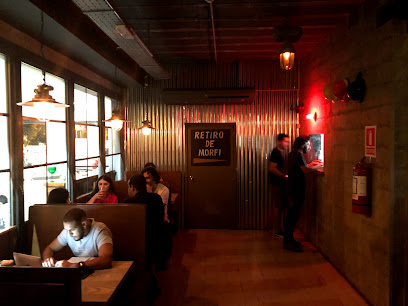
Negroni
Discover the vibrant flavors and lively atmosphere at Negroni Bistro Bar in Montevideo, a culinary hotspot for food lovers and nightlife seekers.

Volve Mi Negra
Experience the vibrant nightlife at Volve Mi Negra, Montevideo's top bar and disco club, where unforgettable moments await in an electrifying atmosphere.

Mimoso Mvd Pub
Experience the vibrant flavors of Mimoso Mvd Pub, where delicious burgers and pizzas meet a lively pub atmosphere in Montevideo.
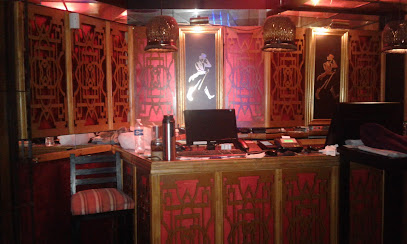
Bar W XYZ
Experience the vibrant nightlife of Montevideo at Bar W XYZ, a lively bar known for its eclectic drinks and welcoming atmosphere.

TeKombiDo Bar | Punta Carretas
Experience the vibrant nightlife of Punta Carretas at TeKombiDo Bar, where unique drinks and a lively atmosphere await.

Cloud 7 Lounge
Experience the vibrant flavors of Montevideo at Cloud 7 Lounge, a gastropub that redefines casual dining with creative dishes and crafted cocktails.
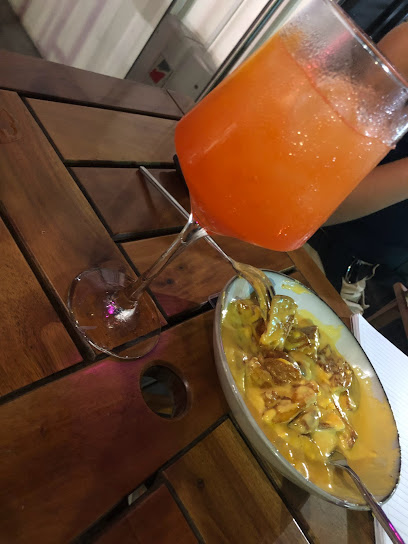
Roxy Bar
Discover the lively spirit of Montevideo at Roxy Bar, where cocktails and culture come alive in a vibrant nightlife setting.

Rostipub
Discover the vibrant atmosphere of Rostipub in Montevideo, where great food, drinks, and live music come together for an unforgettable experience.

Local Phrases
-
- HelloHola
[oh-lah] - GoodbyeAdiós
[ah-dyohs] - YesSí
[see] - NoNo
[noh] - Please/You're welcomePor favor/De nada
[por fah-vor/deh nah-dah] - Thank youGracias
[grah-syahs] - Excuse me/SorryDisculpe/Perdón
[dees-kool-peh/pehr-dohn] - How are you?¿Cómo estás?
[koh-moh ehs-tahs] - Fine. And you?Bien. ¿Y tú?
[byen. ee too] - Do you speak English?¿Hablas inglés?
[ah-blahs een-glehs] - I don't understandNo entiendo
[noh ehn-tyen-doh]
- HelloHola
-
- I'd like to see the menu, pleaseQuisiera ver el menú, por favor
[kee-syeh-rah behr ehl meh-noo, por fah-vor] - I don't eat meatNo como carne
[noh koh-moh kahr-neh] - Cheers!¡Salud!
[sah-lood] - I would like to pay, pleaseMe gustaría pagar, por favor
[meh goos-tah-ree-ah pah-gahr, por fah-vor]
- I'd like to see the menu, pleaseQuisiera ver el menú, por favor
-
- Help!¡Ayuda!
[ah-yoo-dah] - Go away!¡Vete!
[veh-teh] - Call the Police!¡Llama a la Policía!
[yah-mah ah lah poh-lee-see-ah] - Call a doctor!¡Llama a un médico!
[yah-mah ah oon meh-dee-koh] - I'm lostEstoy perdido
[ehs-toy pehr-dee-doh] - I'm illEstoy enfermo
[ehs-toy ehn-fehr-moh]
- Help!¡Ayuda!
-
- I'd like to buy...Quisiera comprar...
[kee-syeh-rah kohm-prahr] - I'm just lookingSolo estoy mirando
[soh-loh ehs-toy mee-rahn-doh] - How much is it?¿Cuánto cuesta?
[kwan-toh kwehs-tah] - That's too expensiveEsto es demasiado caro
[ehs-toh ehs deh-mah-syah-doh kah-roh] - Can you lower the price?¿Puede bajar el precio?
[pweh-deh bah-har ehl preh-syoh]
- I'd like to buy...Quisiera comprar...
-
- What time is it?¿Qué hora es?
[keh oh-rah ehs] - It's one o'clockEs la una
[ehs lah oo-nah] - Half past (10)Las diez y media
[lahs dyehs ee meh-dee-ah] - MorningMañana
[mah-nyah-nah] - AfternoonTarde
[tahr-deh] - EveningNoche
[noh-cheh] - YesterdayAyer
[ah-yehr] - TodayHoy
[oy] - TomorrowMañana
[mah-nyah-nah] - 1Uno
[oo-noh] - 2Dos
[dohs] - 3Tres
[trehs] - 4Cuatro
[kwah-troh] - 5Cinco
[seen-koh] - 6Seis
[says] - 7Siete
[syeh-teh] - 8Ocho
[oh-choh] - 9Nueve
[nweh-veh] - 10Diez
[dyehs]
- What time is it?¿Qué hora es?
-
- Where's a/the...?¿Dónde está...?
[dohn-deh ehs-tah] - What's the address?¿Cuál es la dirección?
[kwal ehs lah dee-rehk-syon] - Can you show me (on the map)?¿Puedes mostrarme (en el mapa)?
[pweh-dehs mohs-trahr-meh (ehn ehl mah-pah)] - When's the next (bus)?¿Cuándo es el próximo (autobús)?
[kwan-doh ehs ehl proh-ksy-moh (ow-toh-boos)] - A ticket (to ....)Un boleto (a ....)
[oon boh-leh-toh (ah)]
- Where's a/the...?¿Dónde está...?
History of Punta Carretas
-
Punta Carretas originated in the early 18th century as a small coastal settlement on the edge of Montevideo. The name 'Punta Carretas' translates to 'Cart Point', reflecting its use as a point for unloading goods. As Montevideo grew, this area became a popular residential zone for the city's affluent classes, thanks to its picturesque views of the Río de la Plata.
-
In 1877, the Punta Carretas Lighthouse was inaugurated, becoming a critical navigational aid for ships entering the port of Montevideo. This iconic structure not only enhanced maritime safety but also became a landmark for the neighborhood, symbolizing its importance in maritime trade and navigation.
-
By the late 19th and early 20th centuries, Punta Carretas underwent significant urbanization. The establishment of luxurious residences and improvements in infrastructure, such as wide boulevards and parks, transformed it into one of Montevideo's most desirable neighborhoods. Noteworthy buildings from this period exemplify the eclectic architectural styles that define the area today.
-
During the early to mid-20th century, Punta Carretas was a hub for liberal and social movements in Uruguay. As the country experienced political and social upheaval, many activists and intellectuals found refuge in the neighborhood, contributing to its vibrant cultural scene. The area became known for its cafes and cultural gatherings, fostering a spirit of debate and progressive thought.
-
In recent years, Punta Carretas has seen a wave of revitalization and gentrification. The construction of high-end apartments, shopping centers like Punta Carretas Shopping, and the development of cultural spaces have attracted a younger demographic. This transformation has sparked discussions about the balance between preserving historical character and embracing modernity in urban development.
Punta Carretas Essentials
-
Punta Carretas is easily accessible from other neighborhoods in Montevideo. If you're arriving from the city center, you can take bus routes such as 102, 105, or 108, which connect to Punta Carretas directly. Alternatively, taxis and rideshare services are widely available throughout the city. If you're coming from the Carrasco International Airport, a taxi ride will take approximately 30 minutes, while shared shuttle services are also an option.
-
Punta Carretas is a walkable neighborhood, with many attractions within easy reach. Public buses are an efficient way to navigate the area, with multiple routes serving the neighborhood. Bicycle rentals are also available; cycling along the picturesque coastline is a popular activity. For longer distances, taxis and rideshare services are convenient and relatively inexpensive.
-
Punta Carretas is considered a safe neighborhood for tourists, but standard precautions should still be taken. Avoid displaying valuable items and be cautious in less crowded areas, particularly at night. While the neighborhood is generally safe, high-crime areas in Montevideo are typically found in the outskirts; it’s best to stay in well-lit and populated areas.
-
In case of an emergency, dial 911 for police, fire, or medical assistance. The nearest hospital is Hospital de Clínicas, located a short drive away. It’s advisable to have travel insurance that covers medical emergencies. Pharmacies are available throughout Punta Carretas for minor health issues.
-
Fashion: Do wear casual and comfortable clothing, but avoid overly revealing outfits to respect local customs. Religion: Do be respectful when visiting religious sites; cover shoulders and knees. Public Transport: Do give up your seat for elderly passengers; don’t eat or drink on buses. Greetings: Do greet with a friendly handshake; don’t be overly formal. Eating & Drinking: Do try local dishes at restaurants; don’t refuse food offered by locals, as it’s considered impolite.
-
To experience Punta Carretas like a local, explore the Mercado Agrícola, where you can find fresh produce and local foods. Visit the Punta Carretas Shopping center for a mix of local and international brands. Take a stroll along the Rambla, a waterfront promenade where locals jog and socialize. Additionally, indulge in a traditional asado (barbecue) at a local parrilla (grill) to truly savor Uruguayan cuisine.
Nearby Cities to Punta Carretas
-
Things To Do in Maldonado
-
Things To Do in Punta del Este
-
Things To Do in Colonia del Sacramento
-
Things To Do in La Plata
-
Things To Do in Buenos Aires
-
Things To Do in Fray Bentos
-
Things To Do in Tacuarembó
-
Things To Do in Mar del Plata
-
Things To Do in Rosario
-
Things To Do in Córdoba
-
Things To Do in Encarnacion
-
Things To Do in Carmen del Parana
-
Things To Do in Villarrica
-
Things To Do in Puerto Iguazú
-
Things To Do in Foz do Iguaçu








